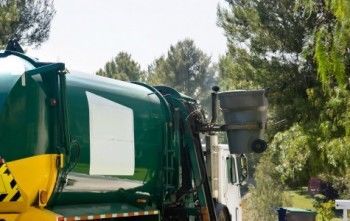Small Airports and the Challenge of Wildlife Hazard Control
 It’s an ongoing issue that most of us don’t think about until it happens. An aircraft makes contact with wildlife (usually a bird), either while taking off/landing or in flight, causing damage to the plane and putting the flight and passengers at risk. The FAA says that wildlife-aircraft strikes have been responsible for hundreds of human deaths over the past century. Tens of thousands of these strikes occur each year, and at least two instances of such strikes made the news in the past month-one in Sacramento and one in Calgary, Alberta. Thankfully, no one was hurt in these instances.
It’s an ongoing issue that most of us don’t think about until it happens. An aircraft makes contact with wildlife (usually a bird), either while taking off/landing or in flight, causing damage to the plane and putting the flight and passengers at risk. The FAA says that wildlife-aircraft strikes have been responsible for hundreds of human deaths over the past century. Tens of thousands of these strikes occur each year, and at least two instances of such strikes made the news in the past month-one in Sacramento and one in Calgary, Alberta. Thankfully, no one was hurt in these instances.
Predictably, most wildlife-aircraft strikes occur near airports during takeoff or landing, largely because the majority of birds fly at 3000 feet and below. One of the most common risks is when a bird is sucked into an airplane engine, causing the engine to catch fire. Occasionally, mammals like deer will also make contact with an airplane on the runway, causing damage or affecting the safety of takeoff/landing. The issue is so common that the FAA has rules in place for airports to conduct wildlife hazard assessments and enact management plans to reduce the risks of wildlife-aircraft strikes. These measures can include physical barriers, wildlife removal, and habitat modification to discourage birds and mammals from having a presence near airport grounds.
Because the majority of major airports are government controlled, compliance with FAA regulations is understood-but smaller, private or corporate owned airports are not exempt from these rules, and still must meet regulatory compliance requirements. Additionally, the smaller aircraft that are used at these airfields are particularly susceptible to life-threatening situations if a wildlife strike occurs. This makes it an ongoing challenge for small airports to assess and manage the wildlife hazard risks, and even more of a challenge to stay in compliance with FAA guidelines regarding wildlife hazard control.
While many companies (including airports) utilize ProComplianceWare for maintaining compliance with environmental regulations established by the EPA, our software can also facilitate smaller airports in the ongoing challenges to keep flights safe from wildlife-aircraft strikes and to comply with FAA rules regarding wildlife hazard management. For $250 per month, airport administrators can track data, inspections, deadlines and more, accessible online from any computer, tablet or smartphone. Not only does this help small airports avoid costly fines for noncompliance-most importantly, it also helps them reduce the risks of injury or death for the pilots and passengers who use their facilities.
The time to take action on wildlife hazard control is before a strike incident occurs, not after. For more information on how ProComplianceWare can help improve the safety of your small airport, call us at 800-832-8508 or email us using this form.











Leave a comment